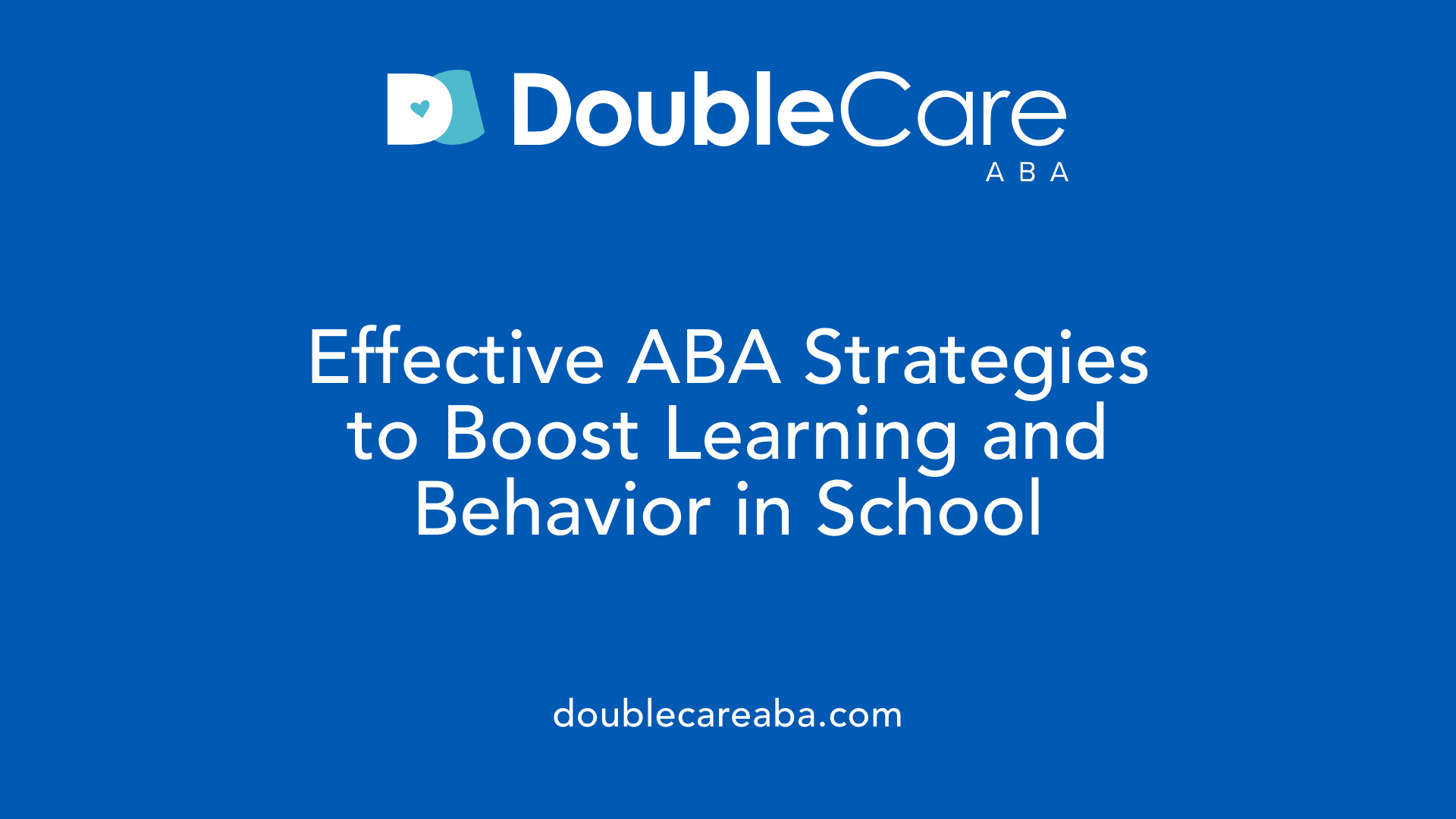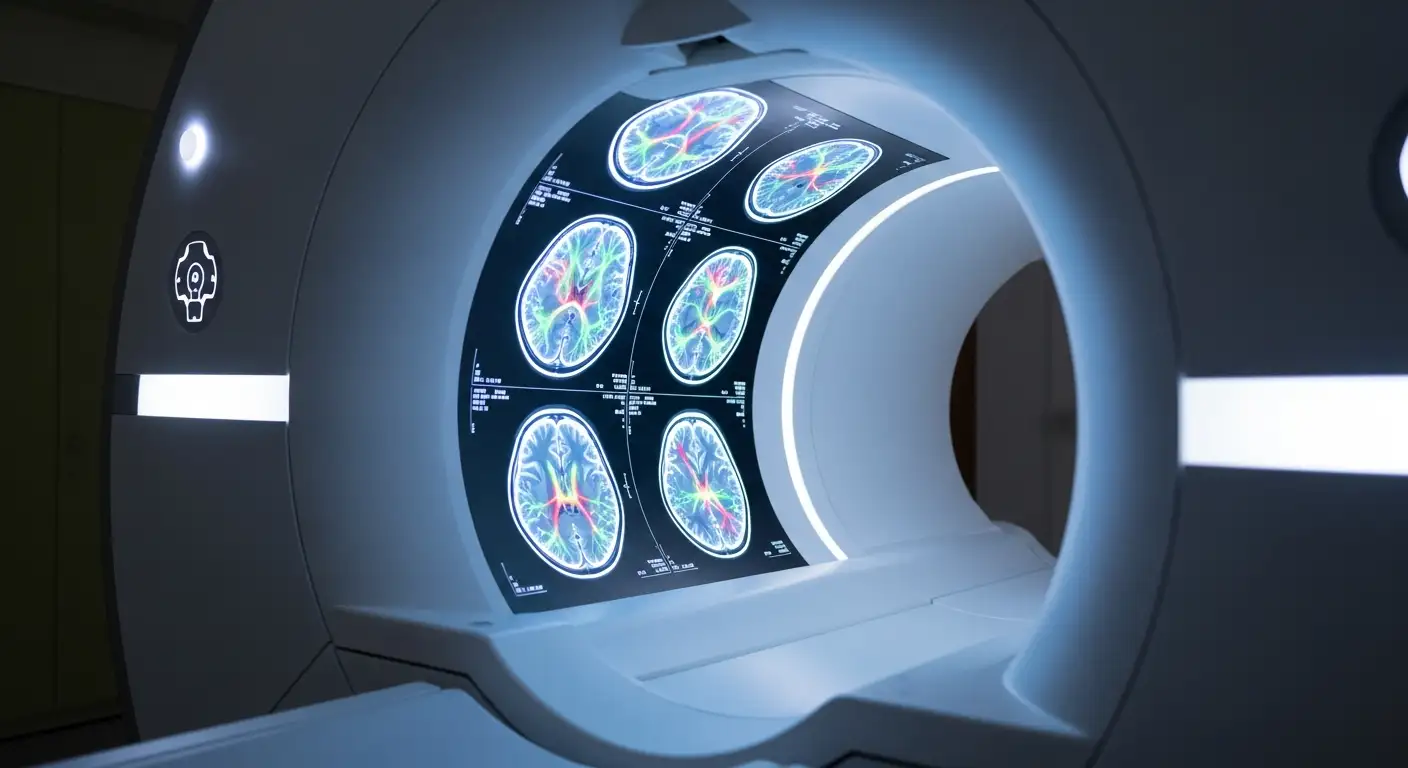Using ABA Therapy to Strengthen Independence at School
Empowering Autistic Students Through ABA Therapy for Greater School Independence

Unlocking Potential: The Role of ABA Therapy in School Settings
Applied Behavior Analysis (ABA) therapy is a cornerstone intervention for children with autism spectrum disorder, designed to build skills that support independence and success in various environments, particularly the school setting. This article explores how ABA therapy strengthens independence at school by enhancing communication, social, academic, and daily living skills while reducing challenging behaviors. By examining individualized approaches, therapeutic techniques, and progress measurement, we provide insight into the transformative power of ABA therapy in educational contexts.
Understanding ABA Therapy: Foundations and Objectives

What is Applied Behavior Analysis (ABA) therapy?
Applied Behavior Analysis (ABA) therapy is a scientifically supported and structured approach designed to help individuals with autism spectrum disorder (ASD) develop important skills and reduce interfering behaviors. It uses principles of behavioral learning, such as positive reinforcement, to encourage desirable behaviors while minimizing those that hinder everyday functioning.
Historical development and evidence base
ABA therapy was first developed in the 1960s by Ole Ivar Lovaas and has since been extensively researched, with numerous studies confirming its effectiveness. Recognized by leading health organizations, ABA is widely regarded as an evidence-based intervention that improves communication, social skills, and independent living. Early and intensive ABA therapy has shown significant gains in language and cognitive abilities, especially when tailored to individual needs.
Core principles such as positive reinforcement and behavioral analysis
At the heart of ABA therapy is behavioral analysis, which involves understanding and modifying how behaviors are learned and maintained. Positive reinforcement is a cornerstone strategy; when a desired behavior occurs, it is immediately rewarded to increase its frequency. Therapy often breaks complex tasks into smaller steps, offering rewards and support to build skills gradually. Individualized treatment plans are created by behavior analysts and delivered by trained therapists to ensure each child's unique strengths and challenges are addressed.
Goals including skill acquisition and behavior reduction in school contexts
ABA therapy aims to teach valuable skills that enhance everyday functioning and independence. These include communication improvements (both verbal and nonverbal), social interaction abilities like turn-taking and understanding social cues, academic skills necessary for school readiness, and daily living tasks such as dressing and hygiene. Additionally, ABA helps reduce challenging behaviors—like tantrums or aggression—by replacing them with appropriate alternatives. Therapy focuses on generalizing skills across environments like home and school to support full participation in educational settings and community life.
Tailoring ABA Therapy: Individualized Planning and Professional Roles

Who Typically Provides ABA Therapy Services?
ABA therapy is delivered by a collaborative team specializing in behavioral intervention for autism. The team is led by Board Certified Behavior Analysts (BCBAs), who design and oversee detailed, individualized treatment plans based on thorough assessments of each child's strengths and challenges. Registered Behavior Technicians (RBTs) and other support staff carry out the daily implementation of these plans under the BCBA's supervision, ensuring consistency and fidelity in therapy delivery.
Role of BCBAs in Designing and Overseeing Treatment Plans
BCBAs play a critical role by crafting customized goals that address each child's unique needs. They collect and analyze behavioral data continuously to adjust interventions effectively. Their expertise ensures that therapy promotes skills like communication, social interaction, daily living, and emotional regulation in targeted and meaningful ways.
Implementation by RBTs and Support Staff
RBTs, trained in ABA techniques, interact directly with the child to practice new skills, reinforce positive behaviors, and reduce challenging ones. They provide hands-on support during therapy sessions, applying techniques like positive reinforcement and play-based learning as guided by the BCBA's plan.
Importance of Individualized Treatment Goals in School Readiness and Independence
Treatment plans are carefully tailored to foster school readiness by enhancing attention span, memory, and compliance with instructions. They also emphasize independence by teaching daily living skills such as dressing and hygiene. This personalized approach ensures that therapy aligns with the child's developmental pace and real-world needs.
Family Involvement and Training for Consistency Across Home and School
Family engagement is essential to ABA therapy’s success. Parents and caregivers receive training and regular updates to reinforce learned skills outside therapy sessions. This partnership helps generalize behaviors across home, school, and community settings, promoting a cohesive support system that sustains the child’s progress.
| Professional Role | Responsibilities | Contributions to Therapy |
|---|---|---|
| BCBA | Design, oversee, adapt treatment plans based on data | Ensures therapy targets individual needs and tracks progress |
| RBT | Direct therapy implementation under BCBA supervision | Provides one-on-one interaction and skill practice with child |
| Family | Training and reinforcement of skills beyond therapy sessions | Enhances generalization and consistent behavior support |
This structured teamwork and individualized focus make ABA an effective intervention to maximize skill development and independence for children with autism.
Key Techniques Employed in ABA to Support Learning and Behavior at School

What are the common techniques used in ABA therapy?
ABA therapy uses a variety of structured techniques to support learning and behavior, especially in school settings. One foundational method is positive reinforcement, where desired behaviors such as following instructions or social interactions are immediately rewarded to encourage their repetition.
Discrete Trial Training (DTT) and Natural Environment Training (NET)
While DTT involves breaking down skills into small, manageable steps taught in a structured, repetitive environment, modern ABA often favors Natural Environment Training (NET), which integrates learning within everyday activities to help children generalize skills more naturally.
Behavior Chaining and Task Breakdown
Behavior chaining is applied to teach complex tasks by breaking them down into sequential steps, like putting on a jacket or completing a classroom routine. This technique gradually builds independence by reinforcing each small step.
Use of Prompting, Modeling, and Visual Aids
ABA uses evidence-based strategies such as prompting (verbal or physical cues) and modeling (demonstrating behaviors) to enhance understanding. Visual aids like charts, pictures, and videos are frequently employed to help children comprehend expectations and remember routines.
Managing and Reducing Challenging Behaviors
Challenging behaviors such as disruptions or aggression are addressed through identifying triggers and teaching replacement behaviors using positive methods. Techniques like redirection, behavior contracts, and extinction help reduce these behaviors while promoting emotional regulation.
These systematic and adaptable techniques are tailored to each child's unique strengths and needs, enabling them to build essential skills for academic success and improved social participation.
Enhancing Communication and Social Skills for School Integration

How Does ABA Therapy Improve Communication Skills?
ABA therapy uses individualized strategies to enhance both verbal and nonverbal communication in children with autism. Therapists and Registered Behavior Technicians work on language acquisition and alternative communication methods, helping children express their needs, wants, and emotions more effectively. Positive reinforcement encourages repetition of these skills, supporting steady progress.
What Social Skills Does ABA Help Develop?
ABA supports the growth of essential social skills such as turn-taking, sharing, maintaining eye contact, and understanding social norms. These skills are crucial for successful interactions in classroom environments and with peers. Through structured activities and role-playing, children learn to navigate social rules and build meaningful relationships.
How Does ABA Facilitate Play and Leisure for Peer Interaction?
In addition to communication, ABA therapy focuses on play and leisure skills. Children learn appropriate toy use, participation in group games, and leisure activities that promote social interaction. These activities help children feel included and comfortable participating in school social settings.
How Are Social Cues Taught to Help Children Navigate School Settings?
ABA therapists teach children to recognize and interpret social cues such as facial expressions, body language, and tone of voice. Understanding these signals enables children to respond appropriately in classroom and group activities, improving social integration and peer relationships.
| Focus Area | ABA Strategies | Outcomes for School Integration |
|---|---|---|
| Communication | Verbal and nonverbal communication training, positive reinforcement | Improved expression of needs and participation |
| Social Skills | Turn-taking, sharing, eye contact, social norms teaching | Better peer interactions and classroom behavior |
| Play and Leisure | Structured play, group activities, leisure skills development | Enhanced peer engagement and social inclusion |
| Social Cue Recognition | Teaching facial, vocal, and body language cues | Improved understanding of social context in school |
Building Independence Through Daily Living and Safety Skills
How does ABA therapy teach personal hygiene routines like tooth brushing and dressing?
ABA therapy helps children with autism develop essential daily living skills by breaking down personal hygiene tasks into manageable steps. For instance, therapists use behavioral techniques to teach routines such as tooth brushing and dressing, reinforcing each successful step with positive reinforcement to encourage skill mastery and independence.
What skills for meal preparation and toileting are targeted in ABA therapy?
ABA therapy supports the acquisition of meal preparation skills through step-by-step guidance, helping children learn to safely and independently prepare simple foods. Toileting routines are also taught with a focus on consistency and recognition of physical cues, facilitating autonomy in personal care.
How does ABA promote safety awareness, including recognizing danger and asking for help?
Safety awareness is a crucial part of ABA therapy. Children are taught to recognize potentially dangerous situations, understand physical and social boundaries, and practice asking for help when needed. Visual tools and repeated practice across different settings reinforce these important safety behaviors.
How are these daily living and safety skills generalized across home, school, and community environments?
A fundamental goal of ABA therapy is the generalization of learned skills. Therapists work closely with families and schools to ensure that personal hygiene, meal preparation, toileting, and safety behaviors are practiced consistently in diverse environments. This fosters autonomy and enables children to apply their skills effectively at home, in school, and within the community.
ABA's structured, individualized approach equips children not only with fundamental self-care abilities but also with safety awareness, empowering them to participate more independently in daily life.
Supporting Emotional Regulation and Reducing Challenging Behaviors
How does ABA therapy support emotional regulation?
ABA therapy incorporates calming strategies and visual tools that help children with autism manage feelings of frustration and anxiety. These tools offer clear, soothing cues that guide children through emotional responses, allowing them to gain better control over their reactions.
How are challenging behaviors reduced in ABA therapy?
Therapists begin by identifying triggers for challenging behaviors such as tantrums and aggression. ABA then teaches replacement behaviors—appropriate actions that serve the same purpose—to reduce these unwanted behaviors effectively and safely.
How does ABA promote self-regulation and school participation?
By targeting emotional regulation, ABA enhances children’s ability to stay calm and focused. This improvement in self-regulation helps children participate more fully in academic activities and maintain attention during school tasks, fostering better learning outcomes.
How does ABA therapy respect neurodiversity while addressing behaviors?
Modern ABA emphasizes building on the individual strengths and interests of each child. It aims to support independence and social participation without forcing conformity to neurotypical norms, thereby respecting natural expressions while addressing behaviors that interfere with daily living and social integration.
Measuring Progress: Data-Driven Decisions to Maximize Outcomes
How is the progress measured in ABA therapy?
Progress in ABA therapy is measured through systematic and data-driven approaches that focus on observable behaviors. Therapists collect data using specific methods such as frequency recording (counting how often a behavior occurs) and duration recording (measuring how long a behavior lasts). These objective metrics allow for clear tracking of improvements or challenges over time.
Formal assessments play a vital role in gauging skill mastery. Tools like the VB-MAPP (Verbal Behavior Milestones Assessment and Placement Program) and ABLLS-R (Assessment of Basic Language and Learning Skills) help pinpoint particular skill areas and track development accurately. Additionally, Functional Behavioral Assessments (FBAs) identify behaviors needing intervention.
Registered Behavior Technicians (RBTs) gather data during therapy sessions, but Board Certified Behavior Analysts (BCBAs) oversee and regularly analyze this information. BCBAs make essential decisions about modifying treatment plans based on trends in the data, ensuring that interventions remain effective and personalized.
Another crucial aspect involves consistent communication with families and school staff. Sharing progress updates and collaborating on reinforcement strategies guarantees that skills are supported across all settings, enhancing generalization and functional independence.
This continuous cycle of collecting data, evaluating outcomes, adjusting plans, and involving caregivers helps maximize the benefits of ABA therapy, driving positive, meaningful changes in the child's life.
Long-Term Impact: Preparing for Success Beyond School

Linking ABA-Supported Skills to Academic and Vocational Success
ABA therapy equips children with essential skills that directly support their academic and vocational achievements. Through personalized interventions, children improve attention, memory, and the ability to follow instructions, allowing for better engagement in educational environments. Additionally, ABA helps develop cognitive skills such as sequencing and problem-solving, which are vital for classroom learning and future employment opportunities. By teaching daily living and social skills, ABA prepares individuals for the routines and interactions they will encounter in work settings.
Transition Planning for Adolescence and Independent Living
As autistic individuals grow, ABA therapy supports transitions through tailored plans that focus on independence and life skills. From adolescence to adulthood, therapy targets emotional regulation, safety awareness, personal hygiene, and self-advocacy. These skills are crucial for successful independent living, enabling individuals to manage daily responsibilities and navigate new environments confidently. The structured approach of ABA adapts to the evolving needs of each person, facilitating smoother transitions during important life stages.
Promoting Advocacy and Community Involvement to Foster Inclusion
ABA therapy emphasizes the importance of community participation and self-advocacy. By fostering social communication and understanding of social rules, individuals are better equipped to engage inclusively with peers and community members. Family involvement and advocacy training empower both individuals and their support systems to promote acceptance and inclusion in various social settings. This active participation enhances quality of life and helps build supportive networks.
ABA’s Role in Developing Autonomy and Dignity for Individuals with Autism Spectrum Disorder
Fundamentally, ABA therapy aims to enhance autonomy by teaching skills that enable individuals to make choices, self-regulate, and perform daily tasks independently. Contemporary ABA respects neurodiversity, focusing on building strengths and interests rather than enforcing conformity, thus preserving each person's dignity. By reducing interfering behaviors and replacing them with functional alternatives, ABA helps individuals express themselves authentically while achieving greater independence and self-confidence.
Empowering Independence Through Evidence-Based ABA Therapy
ABA therapy, with its individualized, evidence-based approach, effectively supports autistic students in acquiring the communication, social, emotional, and daily living skills critical for independence at school. Through skilled teams of professionals and active family participation, ABA interventions are designed to nurture each child's strengths, reduce challenging behaviors, and promote generalization of learning across settings. The methodical progress tracking and adaptability ensure that therapy remains focused on meaningful outcomes, preparing children not only for academic success but for fuller participation in society. By emphasizing skills that enhance autonomy and respect neurodiversity, ABA therapy is a powerful tool in enabling children with autism to thrive independently in school and beyond.
References
- Benefits of ABA Therapy for Children with Autism
- The Controversy Around ABA
- Unlocking the Benefits of ABA Therapy for Children ...
- ABA Therapy and the Pursuit of Independence in Daily Life
- ABA Therapy: A Path to Independence for Children with ...
- Applied Behavior Analysis (ABA)
- Applied Behavior Analysis (ABA)
















